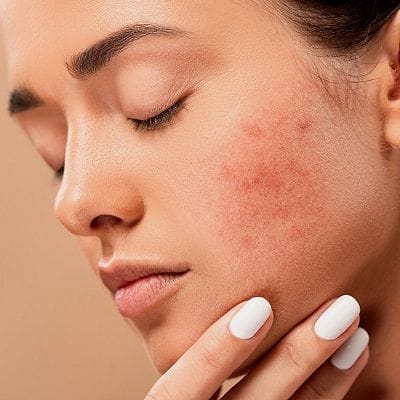The Most Effective Melasma Treatment for Sun Damage

Melasma is a common skin concern that appears as dark, patchy spots, often triggered or worsened by sun exposure. Sun damage plays a major role in the development and persistence of Melasma treatment Dubai making it essential to understand the most effective treatments to achieve a clearer and more even skin tone. This article explores professional approaches, lifestyle considerations, and preventive strategies, all explained in a clear, friendly, and informative manner.
Understanding Melasma and Sun Damage
Melasma occurs when the skin produces excess pigment, often resulting in brown or gray-brown patches on the face. Sun exposure stimulates melanocytes, the cells responsible for producing pigment, which can worsen existing melasma or trigger new patches. Understanding the link between sun damage and melasma is critical to selecting the most effective treatment.
How Sun Exposure Affects Melasma
- UV rays penetrate the skin, increasing melanin production.
- Consistent sun exposure can lead to stubborn, persistent patches.
- Skin becomes more reactive, making treatment outcomes slower without proper protection.
Professional Treatment Options
Several professional approaches target melasma caused by sun damage. These treatments focus on reducing pigment, evening skin tone, and preventing recurrence.
Chemical Treatments
Chemical-based treatments are designed to reduce pigment and stimulate skin renewal. They work by gently exfoliating the upper layers of the skin to reveal a brighter complexion.
Light and Energy-Based Therapies
Laser and light therapies are effective for targeting pigment deep within the skin. These therapies break down excess melanin, allowing the skin to naturally clear the dark patches.
Combination Approaches
For more persistent melasma, a combination of chemical treatments and light therapies may be recommended. This dual approach can enhance pigment reduction and accelerate skin renewal.
Daily Skincare Strategies
Professional treatments are most effective when paired with consistent daily skincare habits. Protecting the skin from ongoing sun damage is essential for long-term results.
Sun Protection Measures
- Regular use of broad-spectrum sun protection shields skin from harmful UV rays.
- Protective clothing and accessories can further reduce sun exposure.
- Avoiding peak sun hours minimizes pigment stimulation.
Gentle Skin Cleansing and Moisturizing
Maintaining a balanced skincare routine supports the skin’s natural barrier. Gentle cleansing and proper hydration prepare the skin to respond effectively to treatments.
Lifestyle Considerations for Managing Melasma
Lifestyle habits play a role in preventing sun-induced melasma flare-ups.
Minimizing Direct Sun Exposure
Spending time in shaded areas and scheduling outdoor activities during lower UV periods reduces skin stress.
Consistent Skin Care Routine
Maintaining a routine that supports hydration, gentle exfoliation, and protection ensures skin remains resilient and responsive to treatment.
Understanding Treatment Outcomes
It’s important to set realistic expectations when undergoing melasma treatment for sun damage.
Gradual Improvement
- Pigment reduction occurs over weeks to months.
- Regular treatment sessions may be necessary for noticeable improvement.
Maintenance and Long-Term Care
Even after visible improvement, ongoing sun protection and skin care are essential to prevent recurrence. Consistency is key to sustaining results.
FAQs About Melasma and Sun Damage
What Makes Sun-Induced Melasma Different?
Sun-induced melasma is often more persistent because UV rays constantly stimulate pigment production. This makes sun protection and proactive treatment essential.
Can Melasma Be Completely Eliminated?
While complete elimination may vary based on individual skin types, significant improvement is achievable with consistent treatment and sun protection.
How Soon Will Results Be Visible?
Visible improvements usually appear after several weeks of treatment, with more noticeable changes over multiple sessions. Consistent care at home enhances professional results.
Is There a Risk of Melasma Returning?
Melasma can recur if the skin is exposed to sunlight without protection. Preventive measures and ongoing skincare help maintain the improvements.
Can Lifestyle Changes Support Treatment?
Yes, incorporating sun-safe habits, gentle skincare, and a healthy daily routine enhances treatment outcomes and prevents flare-ups.
Preventive Approaches for Long-Term Results
Maintaining an effective prevention strategy is essential for those prone to sun-induced melasma.
Daily Sun Safety
Even on cloudy days, UV rays can trigger pigmentation. Consistent sun safety helps maintain treatment results.
Skin Hydration and Renewal
Keeping skin hydrated and promoting gentle renewal supports an even tone and enhances the effectiveness of professional treatments.
Mindful Exposure
Balancing time outdoors with protective measures ensures the skin is less susceptible to new pigmentation.
Final Thoughts
The most effective Melasma treatment in Dubai for sun damage is a combination of professional therapies, consistent sun protection, and dedicated skincare routines. Understanding how sun exposure influences melasma and adopting preventive measures allows individuals to achieve visible improvements and maintain healthier, more even-toned skin over time.This friendly and structured approach emphasizes realistic expectations, consistent care, and the importance of protecting the skin from ongoing sun damage, ensuring that melasma management is both effective and sustainable.
